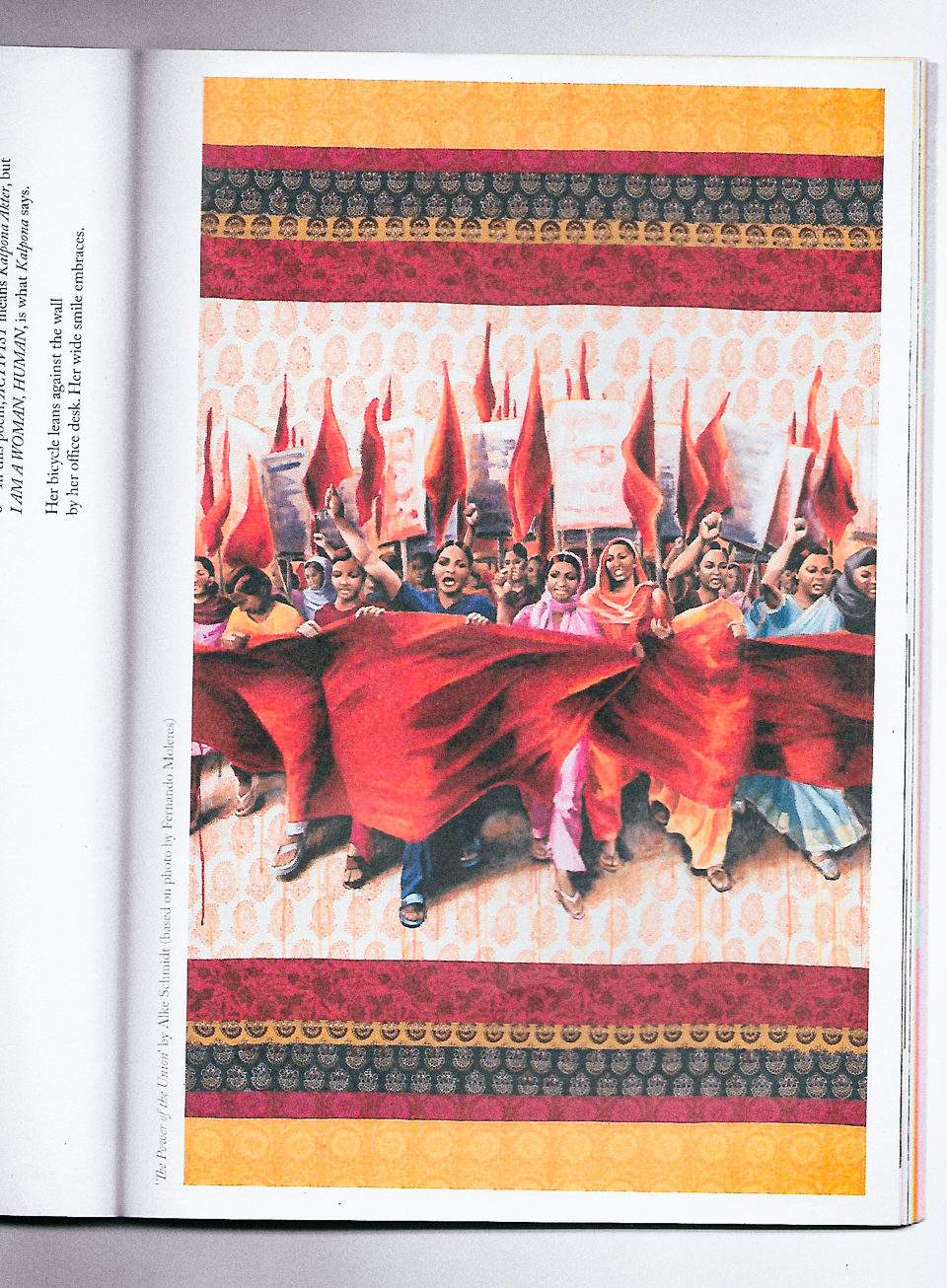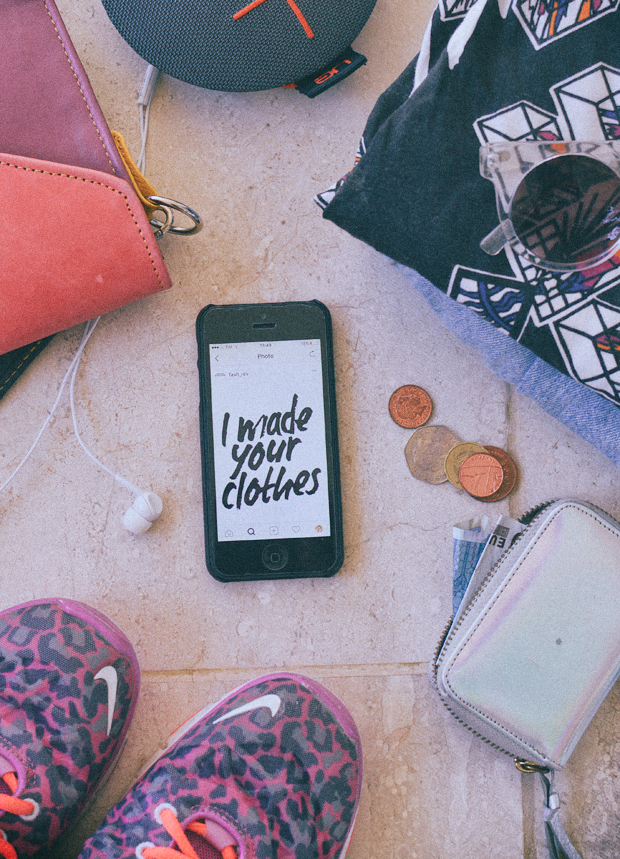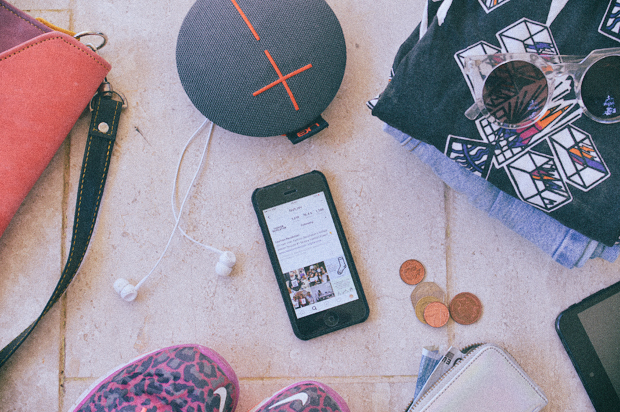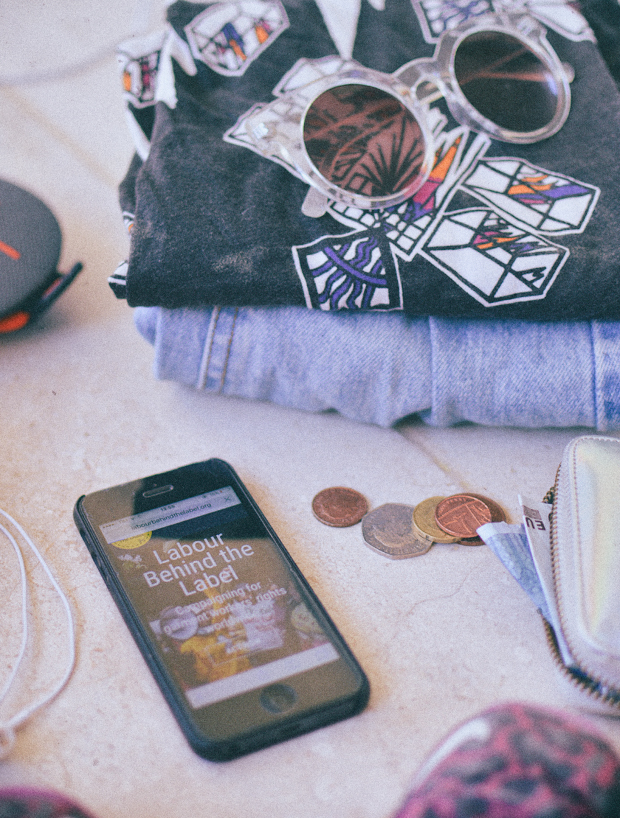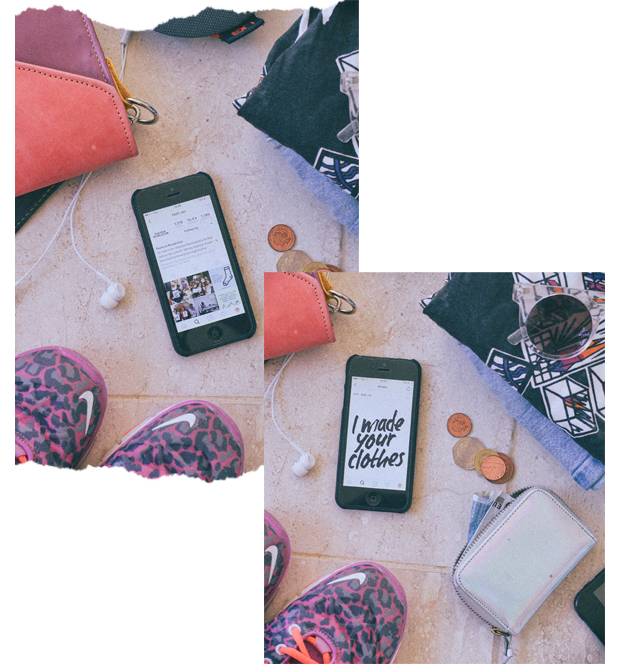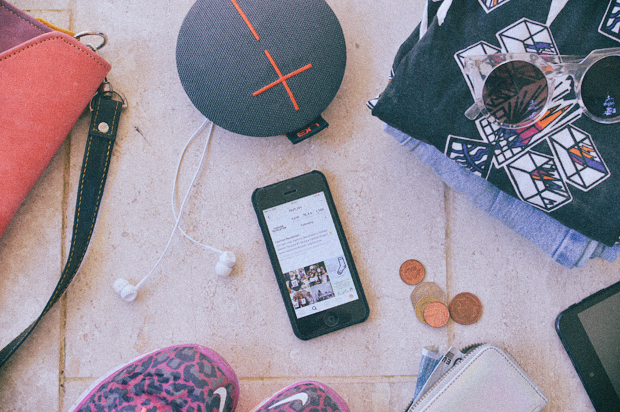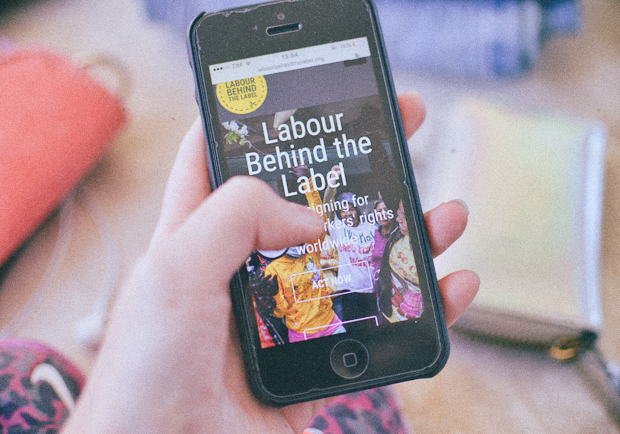I know that bite-sized breakdowns of information are often the best way of getting things across, so, in this post, I’m going to explain what the Bangladesh Accord is, in simple terms. It might not even be something you’re aware of, so perhaps this will even be a little eye-opening…
Scan of Fashion Revolution’s Zine Issue #1 – Artwork by Alke Schmidt
What is the Bangladesh Accord?
The Accord on Fire and Building Safety in Bangladesh was founded in the aftermath of the Rana Plaza garment factory collapse, in May 2013. It was initiated by trade unions – organised groups of workers formed to protect their rights in the workplace – in Bangladesh, as well as global unions and labour rights groups.
The Accord required all companies and brands who signed it to be completely transparent in revealing their factories and putting in place building inspections to ensure that the factories being used were safe from any dangerous hazards, relating to fire, electricity and structural safety.
It is also asked of those brands signed onto the Accord, to be responsible for finding the funds to implement any changes or safety measures that were needed should they appear upon inspection.
One of the most important factors the Accord put in place, was the right for workers to refuse unsafe work without losing pay or suffering any form of discrimination or harm – I highlight this, as it is known workers involved in the Rana Plaza collapse voiced concerns about the factory’s condition before it occurred.
Essentially, the Bangladesh Accord ensured the safety of garment workers, those of which provide the clothes for hundreds of brands worldwide, including those which had signed on since 2013.
H&M, G-Star RAW, Arcadia Group, Debenhams, Fat Face, John Lewis, Marks & Spencer, Matalan, Mothercare, New Look, Next, Primark, and River Island, are some of the names included.
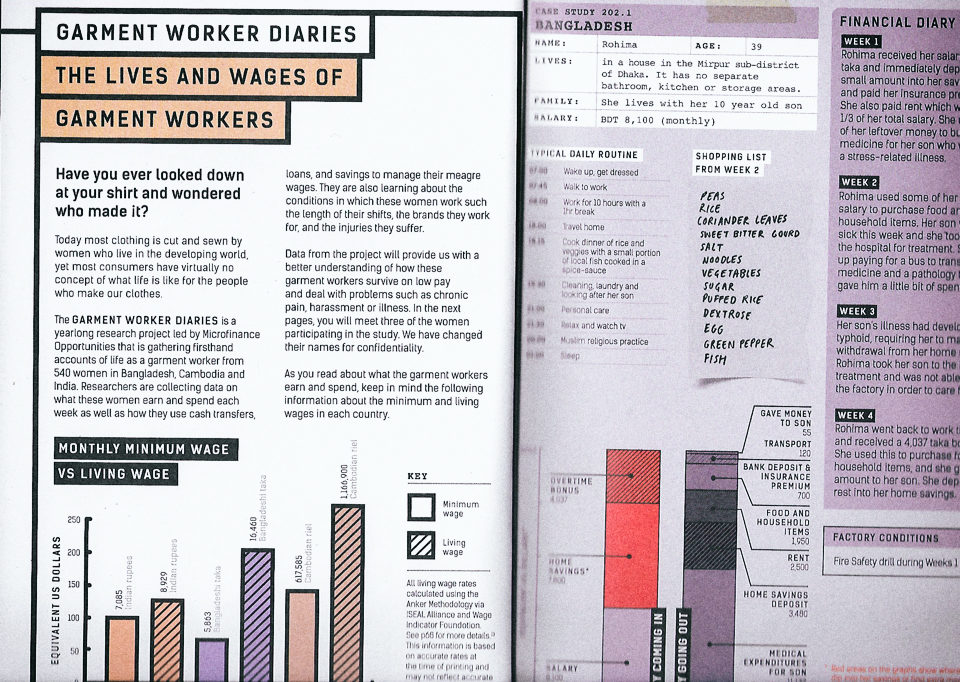
What has the Bangladesh Accord achieved?
In 2012, prior to the Rana Plaza disaster, there was the Tanzeen Fashion factory fire, which killed over 100 people and injured over 200. Similar incidents have also occurred since then, with 24 people killed in a packaging factory in 2016 (although not directly linked to garments, it’s a clear sign that this issue goes further than clothing production).
In an update released by the Accord in December 2018, 97% factories inspected lacked safe fire exits and 91% of factories required an adequate fire alarm system. These are basic needs you would expect of a factory, yet, they were still lacking and putting workers at risk. Instability of factory buildings was also found at 62% of those inspected.
(As somebody who has experience with earthquakes, the photo evidence in the update released reminded me of structural damage I’ve seen and felt unsafe with, in person – and that’s just from a house, not a building which is supposed to withhold heavy loads and powerful machinery.)
The Accord successfully worked at putting these sorts of safety and structural measures in place.
Is the Bangladesh Accord still in place?
In 2018, the new Transition Accord was put in place to ensure the continuation of the Accord in protecting the safety and rights of garment workers – and textile workers, as a whole. However, the Government of Bangladesh have since decided they would like to get rid of the Accord and the take on the responsibility with the national organisation known as the RCC or ‘Remediation Coordination Cell‘.
The Accord states that the RCC is not prepared to take on the responsibility due to lack of staffing and knowledge. The Accord would like to continue the work being done until 2021, as agreed upon when work first began, in order to transfer the knowledge and continue to aid the hundreds of factories which are still lacking in safe working conditions.
Without the Accord monitoring factories at such a scale, it’s possible that there would be no way to guarantee fixes are being put in place, meaning brands under the Accord would have to cut ties with their factories – as part of their legal agreement -, which could run the risk of Bangladesh losing a substantial amount of business in manufacturing, leaving many without jobs and income. This helpful article by Fashion United breaks it down even further.
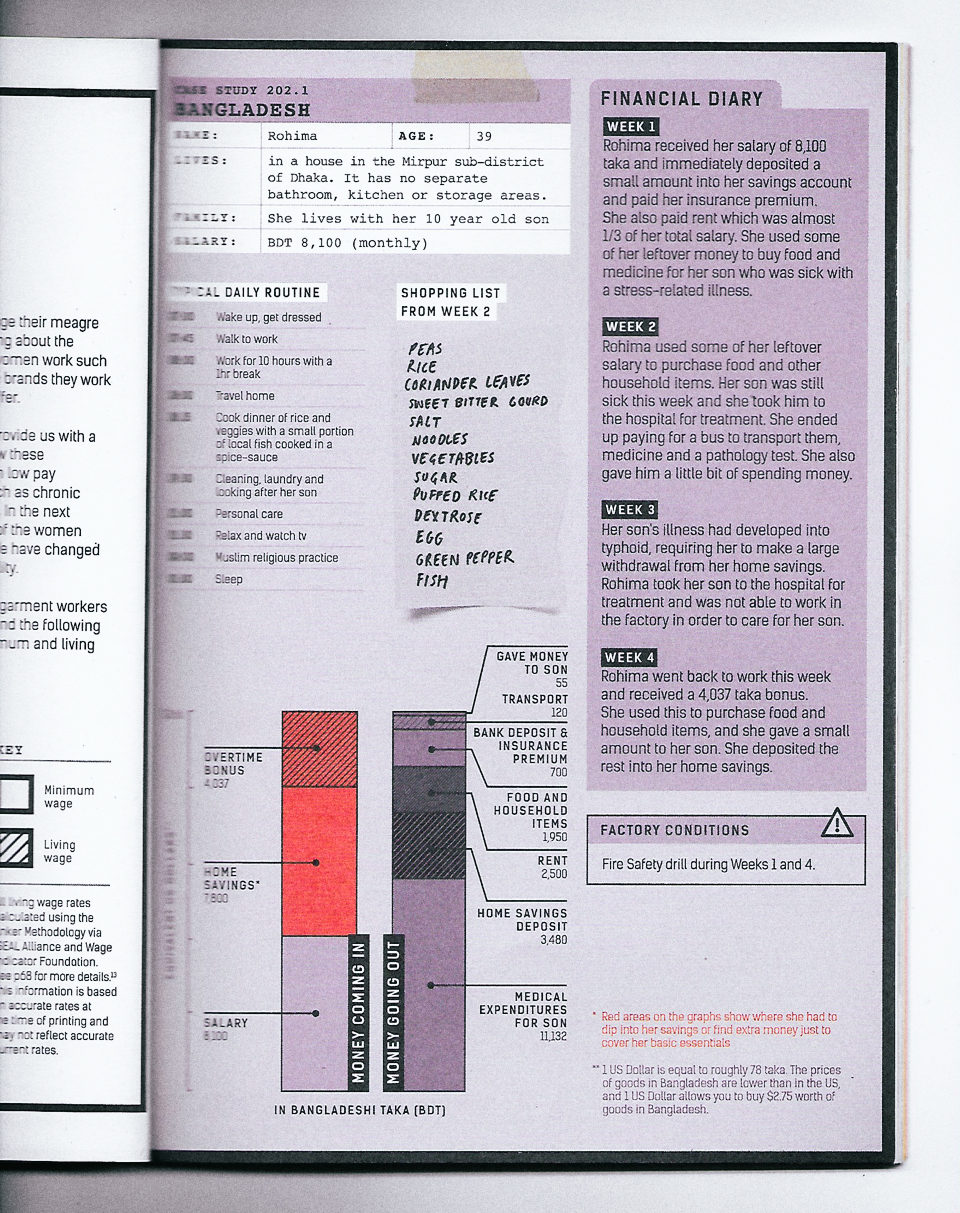
What does this mean about the clothes we buy?
Due to the fact that Bangladesh is the 2nd largest producer of clothing in the world, it’s safe to say that a majority of what we wear is still being produced in what the Accord has found to be unsafe working conditions, putting millions of garment workers at risk every day, for our benefit – and this isn’t counting any of the discriminatory behaviour, harassment or abuse that occurs in these factories on a daily basis, the majority of which is towards exploited and underpaid female workers.
In most recent news in early January 2019, there has been a protest from Bangladeshi garment workers fighting for higher wages which caused the death of one worker and left many injured, after clashes with the police.
What can we do about it?
Support organisations such as Clean Clothes Campaign, who were one of the initial witnesses of the signing of the Accord, by sending a letter to the Bangladesh Prime Minister through the #ProtectProgress petition campaign. The goal is to reach 6,400 letters sent and all it takes is a minute of your time. The letter will send a signal that you care about the rights and safety of garment workers and would like the work of the Accord to continue.
Labour Behind The Label also needs your support. On January 30th 2019, during Bangladeshi Garment Workers Week, Labour Behind The Label is holding an urgent protest in London outside of the Bangladesh High Commission, in order to stand in solidarity of those protesting in Bangladesh itself, and to raise awareness that the Accord is still wanted and necessary to ensure a fairer fashion industry. I will be there and I hope you have the ability to be there, too.
In terms of consumption and shopping, boycotting brands who produce from Bangladesh will never work unless it’s in vast numbers; it will also never be the end goal. However, for sustainability reasons, you may already be cutting down how much you buy new and what brands you choose to support, so, I of course, urge you to continue doing so.
Slowing down is what will inevitably help steer garment factories in a safer direction because there will be less demand and therefore, less pressure, whether that be on the workers, the buildings that surround them, or the planet.
Were you aware of the Accord before? Do you have any more questions? Let me know in the comments!


